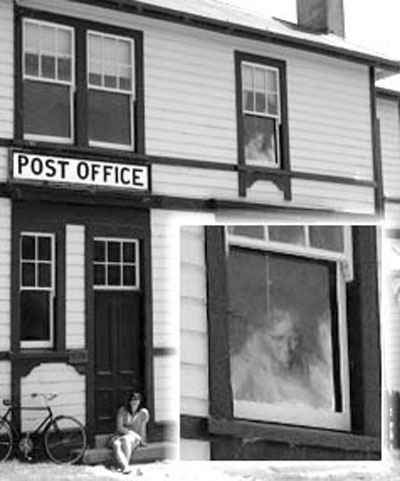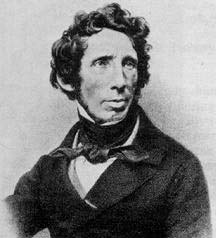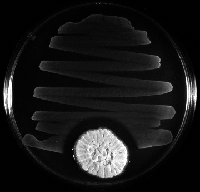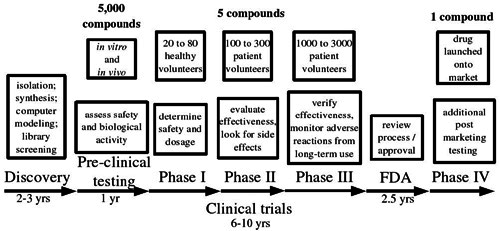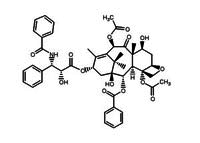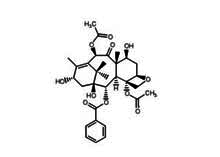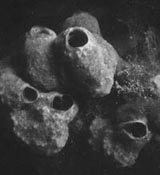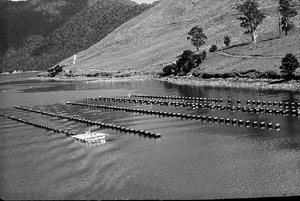Occasionally, the NZ Skeptics receive correspondence from members of the general public. Recently, Chairentity Vicki Hyde took the time to reply to one of these. Portions of the original letter are indented.
Dear Margaret
Thank you for your comments, though it’s sad to see that you believe the general stereotype of skeptic:
The mere term ‘skeptic’ is enough to conjure (oops, not a word skeptics like, I’m sure) up an image of a cynical, dogmatic person, afraid to step outside the realms of their small, unen-lightened world.
“Conjure” would actually be a very suitable term used in skeptical circles, as we have many magicians as members, as well as teachers, homemakers, researchers, a broad sweep of humanity. There are very few who fit the stereotype you have assumed, as about the only thing we have in common is the desire to actually step outside the realm and find out what makes us what we are, what encourages us to think how we do and to respond the way we do to the world around us.
About the only type of person we don’t have in the skeptical ranks are fundamentalist dogmatics, as they are taught to never question authority, and skeptics, by their very nature always ask questions and, in many cases, accept that there are some things we will never have the answers for.
I imagine that Rande, who was featured on a programme about homoeopathy on TV1 last night is typical of the average “skeptic” who desperately goes around trying to “debunk” anything that is not “clinically proven in a scientifically controlled experiment”.
No, not debunking, but investigating — most of us don’t like the term “debunk”, as it implies a biased viewpoint to start with, but the media does persist in using it.
We always try to investigate with an open mind and with the knowledge that everyone is fallible, we are all able to be fooled or biased. And that when extraordinary claims are made, it should involve an extraordinary level of proof.
Randi was asked in because magicians have a very clear professional understanding of how people can be mistaken or hood-winked, whether intentionally or accidentally.
Scientists, however, work in an environment of collegial honesty, which makes them more vulnerable, in some respects, to deception or assumptions. That’s one of the reasons why science encourages investigation, repeated observation, independent corroboration and all the other aspects that help us to differentiate between what we think we know and what we know, to try to eliminate our own biases, prejudices and assumptions in learning about the world.
I wonder if you skeptics ever experience a ‘hunch’ or a ‘gut feeling’ or, dare I say it, intuition … I imagine not — I mean, how can you prove it?
Yes we do. I had a long interview with a reporter this year about the nature of intuition. Sadly the editor wanted to hear only about “just so” intuition anecdotes, rather than the interesting story of why humans feel so strongly about intuition, how it has proven useful to us and why we have such difficulty remembering when it doesn’t work.
I think that intuition is the capacity for apparently making reasonably accurate predictions about the near future based on a combination of both definable and, for the most part, indefinable factors. We’ve all experienced those times when we “just know” something and, when we’re proved right, that’s an immensely powerful reinforcing factor for a belief in intuition or psychic abilities or whatever you think such an experience is based upon.
Humans are, after all, a pattern-seeking animal — we look for patterns in the stars and try and find meaning in them; we analyse our dreams; we try and find cause-and-effect in all manner of connections.
What we humans don’t do, is readily recall the experiences which provide counter-examples to the belief in causal relationships or intuition. We don’t bother thinking “gee, I felt something bad was going to happen today and nothing did!” Instead we look for confirmation of our beliefs — “gee I felt something bad was going to happen today, and look, a week later, I had a car crash!”
However, in our enthusiasm to over-simplify and gain control over our destiny, we have often taken such things too far — that star up there makes the Nile flood (bzzt, wrong!); bleeding a patient will rebalance their humours (bzzt, wrong!); that person is inferior to me because they are a different gender/race/religion/skin colour (bzzt, very wrong!).
There are hundreds and hundreds of people whose flashes of intuition or desperate hopes or even sheer bloody hard work, did not succeed, but you don’t hear about them, they don’t have the compelling story, they don’t get the column-centimetres in the glossy magazines.
Which demonstrates another key psychological point — one strong personal example will always far outweigh collective experience and general statistics.
As in, “my child got a bad reaction to immunisation which means yours will too” generates a much more powerful response in parents than millions and millions of non-affected children in some faceless study. And you see that in operation on Holmes every time the immunisation debate heats up…
I have had, on at least four occasions over the past 20 years, very strong feelings that my father had died or something had happened to him. Once I even rang him in the middle of the night from Japan, where I was living, just to check that he was OK, the feeling was so strong. I was wrong all four times. And the week he did die, I had no inkling at all, much to my sorrow.
I once had an incredibly vivid dream that my second son Perry fell off a bridge into a fast-flowing river. Very, very vivid dream — wind blowing, sharp streetlight shining on the water, his face disappearing beneath the muddy swirls, a terrible gut-churning wrench. Still makes me shudder even six years later. But he was just a toddler in my dream and he’s well past that now, at nine years old. And no, he’s never fallen off a bridge.
Now I am very conscious of the importance of counter-examples, so I have made a point of remembering those times when I have had strong feelings or dreams that haven’t panned out so I can say honestly that we do have such feelings and sometimes they are wrong.
But if my father had had problems within a week or so of any of those times I had worried about him, I could easily claim it as “proof” that intuition works…
Part of it comes down to an understanding of the statistics of coincidence. If I had continued to have dire warnings of my Dad’s imminent demise, then odds-on I would have had one some time close to the point he did die.
Thank goodness the majority of the world is comprised of thinking, feeling, spiritual beings who are intelligent and open minded enough to realise that life is comprised of such complex, multi faceted components which make up our universe and which no scientist or skeptic could possibly begin to understand or prove in a laboratory.
I’d agree with you with the first part — skeptics are incurable optimists and we’d love to believe that the majority of the world is comprised as you describe. It may be that you are confusing skepticism with scientism; the latter is the dogmatic view that science explains everything. Ironically enough, very few real scientists subscribe to it, although the stereotypes assume that they do…
As regards the second assertion, I don’t think any scientist or skeptic worth their salt would suggest that all things are explicable or provable in a lab. We recognise the need for humility in the face of the universe’s complexity, but we also appreciate that some of the complexity can be known better and appreciated in all its glory, if we but ask questions.
As a medievalist, I know that the stars were once regarded (at least in the Judaeo-Christian West) as bright points of light fixed in an immoveable globe of crystal. As a keen amateur astronomer, I know that the universe is much more complicated than that. I would say that the later knowledge is no less beautiful, fascinating and uplifting than the former view, and all the more powerful for being based in reality and shared with millions of others regardless of their culture or world view.
I see you skeptics are making submissions regarding complementary health in New Zealand. Don’t waste your time… Natural medicine is the fastest-growing industry in the world and will continue to be …
Yes, we know it is very popular, which is why it is important to be sure that it is both safe and effective — we can ask no less of anything which we use as medicines, regardless of whether it is herbal or industrial in origin. Anything less is not only potentially dangerous but also ethically unacceptable.
We don’t allow used-car salesmen to make unsubstatiated claims about their vehicles or sell unroadworthy ones (or if they do, we prosecute them). Our health, and the health of our children deserves no less scrutiny.
We recognise that medically useful things have come from chance discoveries, which is why it is important to keep an open mind. What we need to do is ensure that any practice or product we use is safer and more effective than whatever we currently have. That’s the gist of our Complementary and Alternative Medicine (CAM) submission — have you read it? (You can see it online at the Skeptics website, as we believe in open, transparent communication.)
Oh by the way, did you know that 80% of pharmaceutical drugs have no proven efficacy.
I’m not sure where your figure comes from, but certainly there is far too much useage and far too little scientific underpinning for many widely used products. That awareness has led the push for reexamining what drugs we use, how effective they are and whether there are better alternatives.
That’s why you’ll find skeptical groups as equally vocal about the over-prescribing of antibiotics as they are cautious about the claims for mega-vitamin dosages.
It’s why we often point out that a good two-thirds (if not more) of what ails us will get better within three days, regardless of whether you visit a GP or a homeopath.
It’s why we support evidence-based medicine which looks at safety and efficacy issues, critically examing our own assumptions about long-held medical beliefs. We know, for example, by looking at the evidence, that earache in children is best left alone and monitored, rather than treated with antibiotics. We know, by looking at the evidence, that episiotomies for childbirth aren’t warranted in the vast majority of cases, and have been pleased to see their use drop significantly.
We wouldn’t know these things if we didn’t stop to ask questions, to assess the evidence. And, if we are going to hand over our money or our lives to any kind of medical practitioner, surely it makes sense to ensure that they know what they are doing?
…and that 13,000 New Zealanders a year die from the side effects of medically prescribed drugs. Now that is a worry and something you skeptics would be far better off being skeptical about…
That’s an astonishing figure if you stop to think about it (which, after all, is all that skeptics ask people to do…). Where does it come from?
Lessee, that’s half of all deaths in New Zealand annually (I’m using the figures from the 1995 NZ Yearbook, which is the most recent one I have to hand, but I don’t think the figures have changed that much; it cites 26,437 deaths in total).
I guess if you assume that everyone who has cancer or heart disease or cerebrovascular disease died purely as a result of their medication (which assumes they were on medication in the first place), then you’d get somewhere near the figure you quote. But I don’t really think that that is a valid assumption, do you?
Given the type of disease and the likely demographics, then it wouldn’t be unsurprising to have a large number on medication, but the mere fact of that would not be enough to warrant the assertion that it was the drugs wot did it! While we can be critical about regulatory systems, medical practice, the public health system etc, a death rate of that size solely attributable to side effects from medicine would be Big News.
I don’t think that the aspirin my Dad was taking for his heart disease killed him, for example — he died because his heart finally stopped working. And, in fact, I believe that it may well have given him an additional 15 years he would not have had otherwise (the time between his first heart attack and his final), given the evidence for aspirin’s use in heart problems.
We can only find out whether there is a causal relationship between things by examining case after case after case, hence the importance of evidence and record keeping.
We’d encourage CAM practitioners to be involved in this (and some of the best are), not only to help their clients but also to help a better understanding of health issues and responses themselves.
My apologies for the length of this response, Margaret, but the issues you raise are not simple ones, and there are no simple answers. I hope you’ve taken the time to read this far — it’s a sad irony that we often find it’s those who are involved in alternative viewpoints who are not willing to hear other views or reconsider their beliefs. I guess that’s the nature of humanity, but one always lives in the hope of encouraging others to think more deeply — that’s what the NZ Skeptics are all about.
Sincerely
Vicki Hyde
Chair-entity

